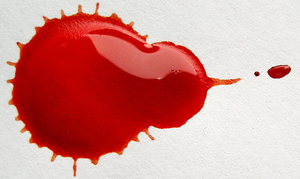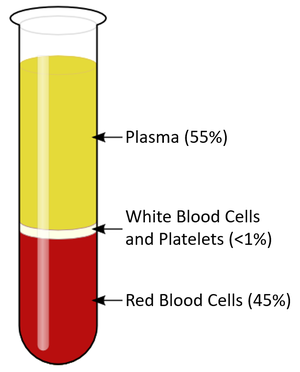Difference between revisions of "Blood"
(→Key Stage 4) |
|||
| Line 39: | Line 39: | ||
==Key Stage 4== | ==Key Stage 4== | ||
===Meaning=== | ===Meaning=== | ||
| − | [[Blood]] is a [[fluid]]ic [[tissue]] found in the [[Circulatory System]] that carries [[oxygen]], [[nutrient]]s, waste products and [[ | + | [[Blood]] is a [[fluid]]ic [[tissue]] found in the [[Circulatory System]] that carries [[oxygen]], [[nutrient]]s, waste products and [[hormone]]s for transport around the body. |
===About Blood=== | ===About Blood=== | ||
Revision as of 15:59, 27 January 2019
Contents
Key Stage 1
Meaning
Blood is a red liquid found in some animals.
| A drop of blood. |
Key Stage 2
Meaning
Blood is a red liquid that carries oxygen and nutrients to every part of the body.
About Blood
- Blood is pumped around the body by the heart.
- Blood goes around the body in blood vessels.
- The blood is transported around the body to give every organ oxygen and nutrients.
- Blood can be bright red or dark red.
Key Stage 3
Meaning
Blood is a fluidic tissue found in blood vessels that carries oxygen, nutrients and waste products for transport around the body.
About Blood
| A picture showing red blood cells going through a blood vessel. |
Key Stage 4
Meaning
Blood is a fluidic tissue found in the Circulatory System that carries oxygen, nutrients, waste products and hormones for transport around the body.
About Blood
- Blood is a tissue made from red and white blood cells, platelets and a fluid called plasma.
- The different parts of blood can be separated by a centrifuge.
| A diagram showing the percentages of the different parts that make up blood. |


